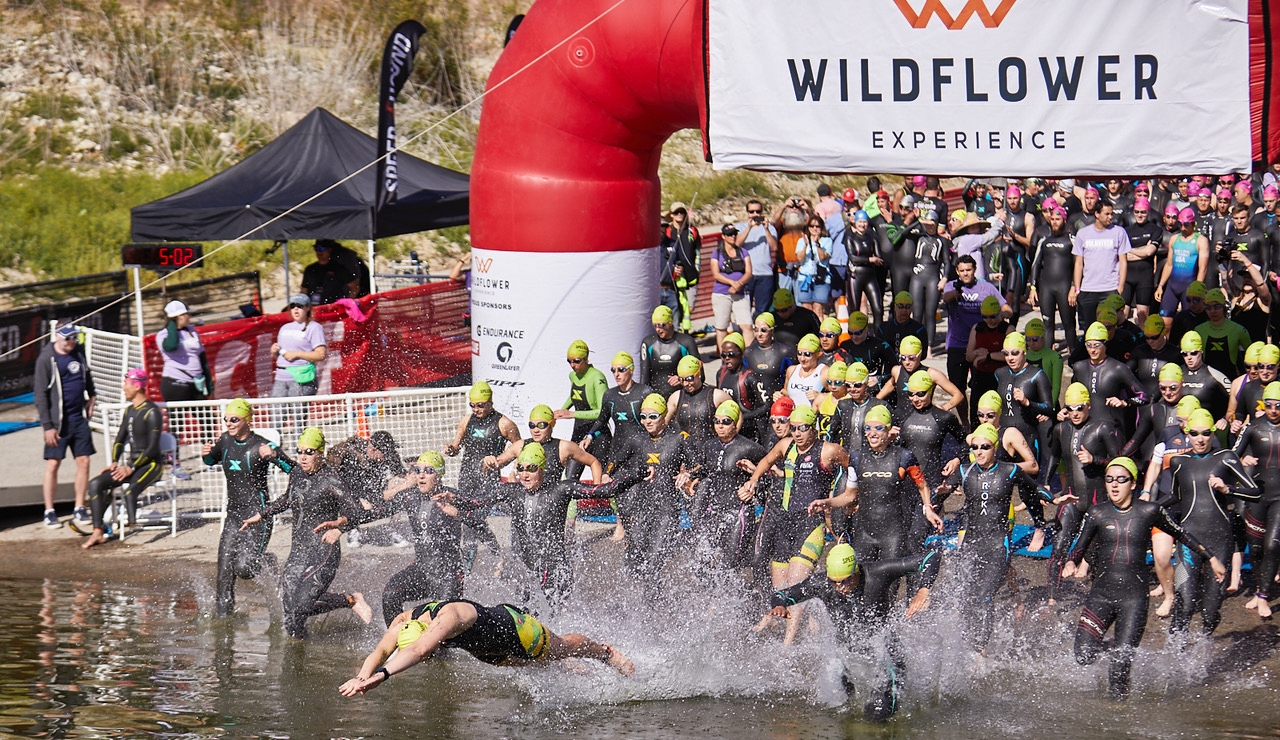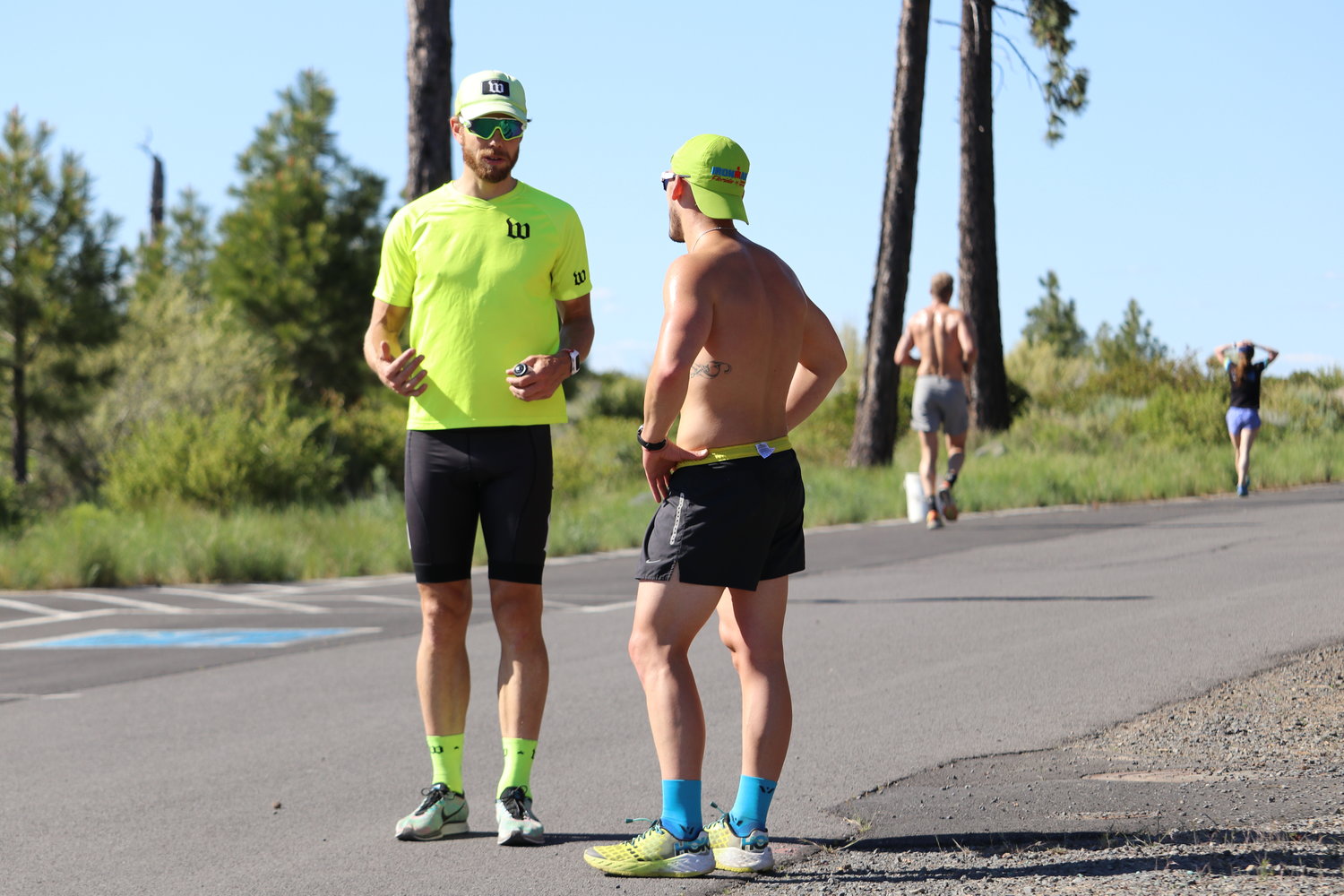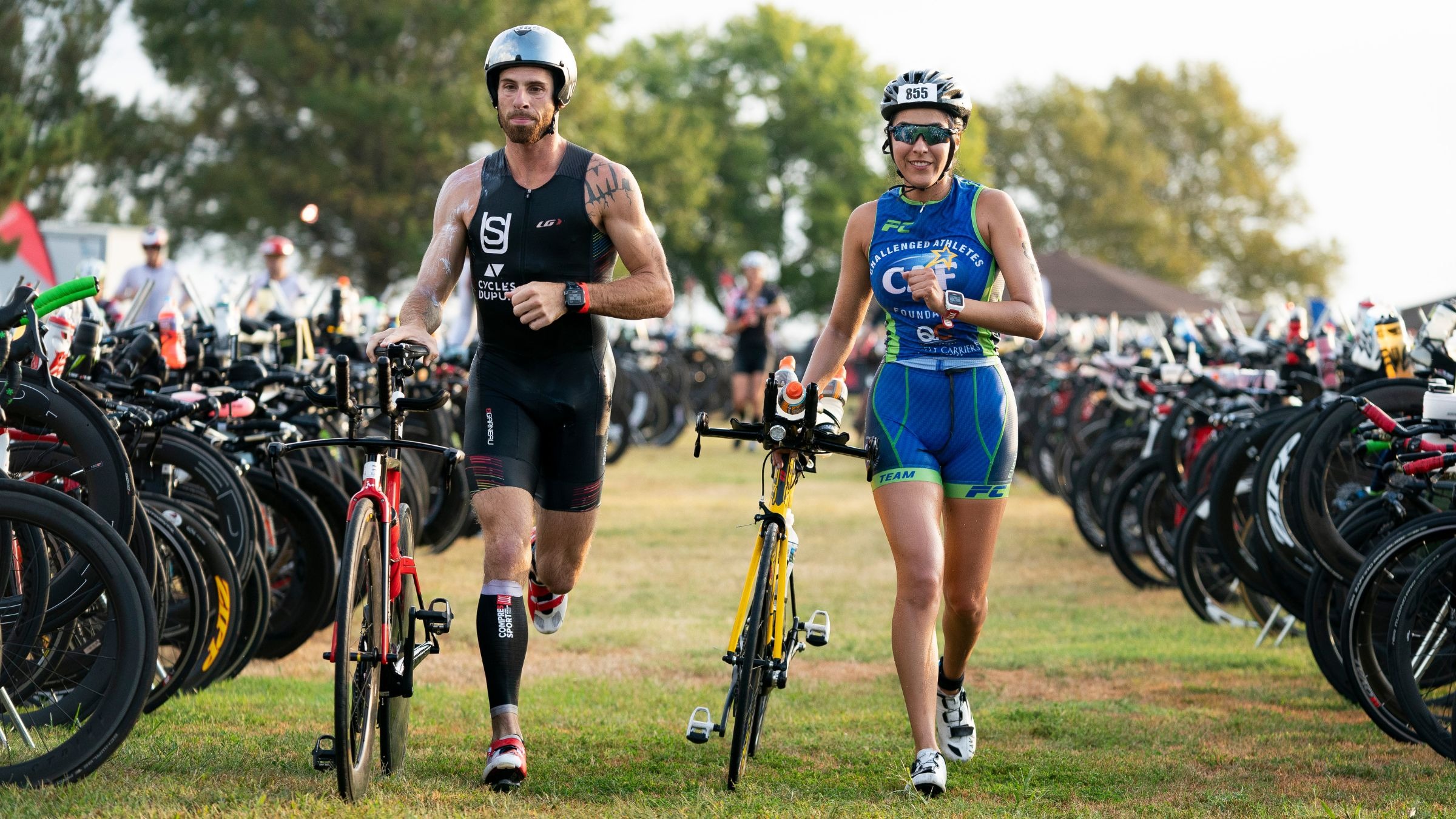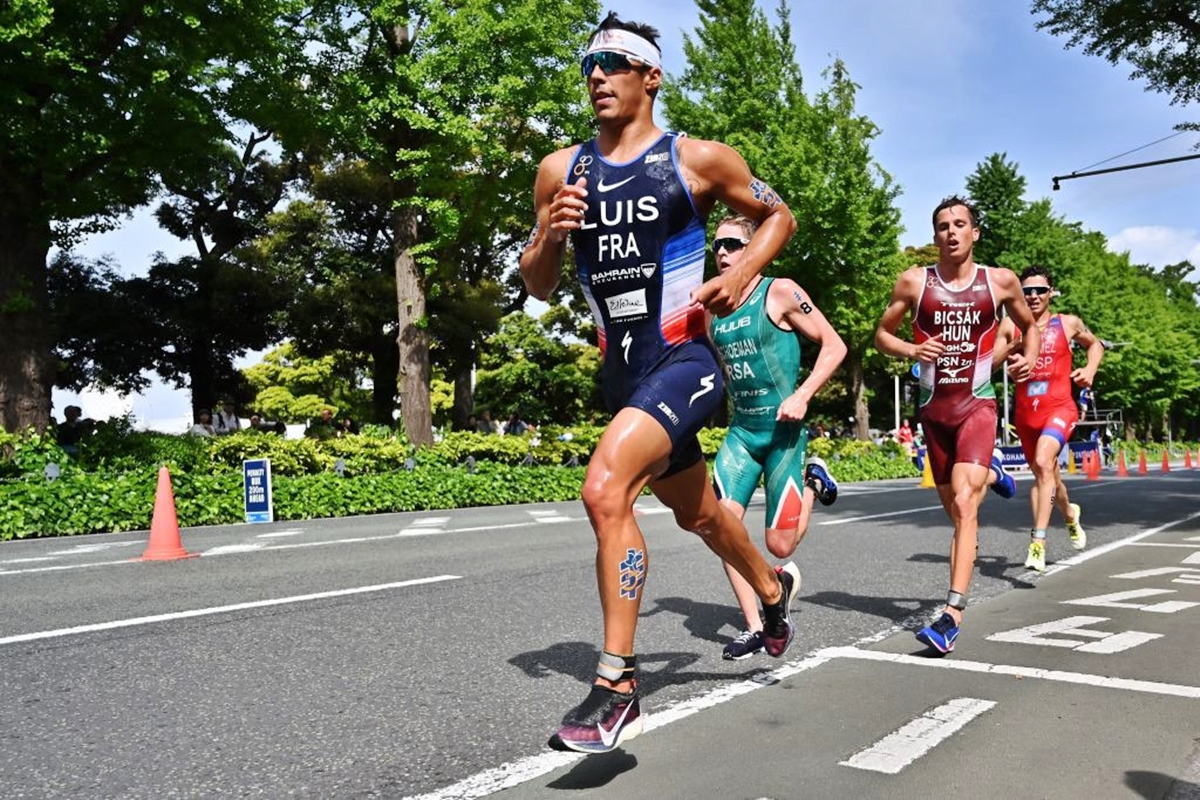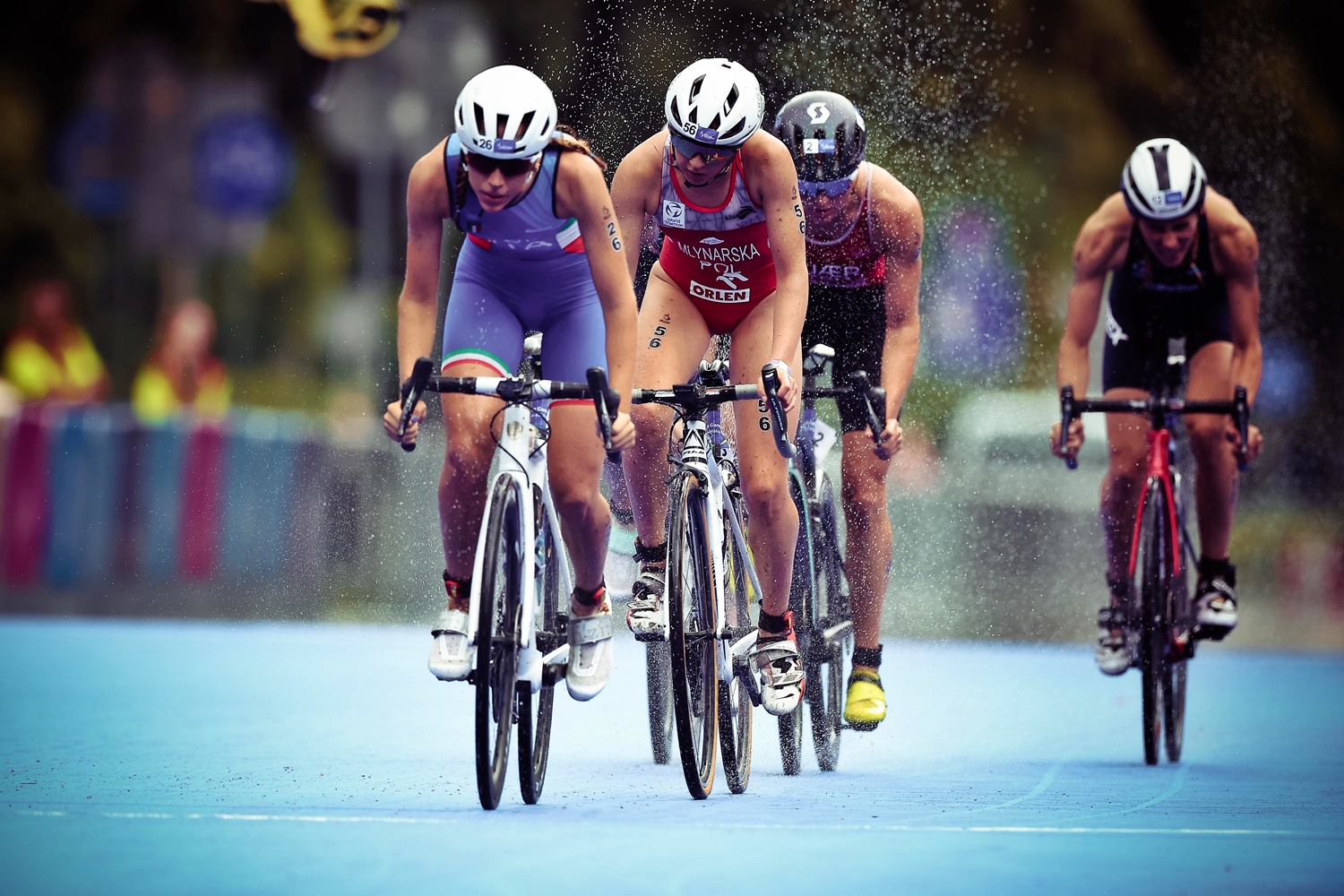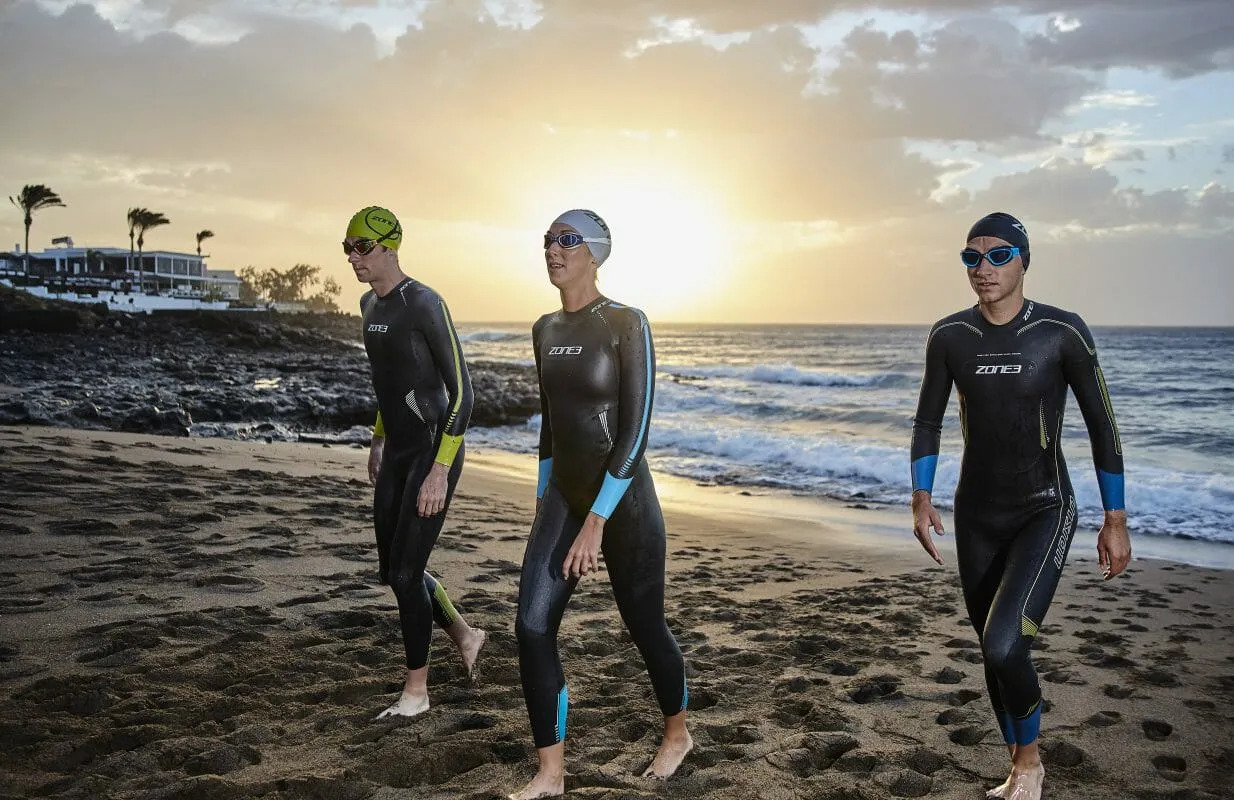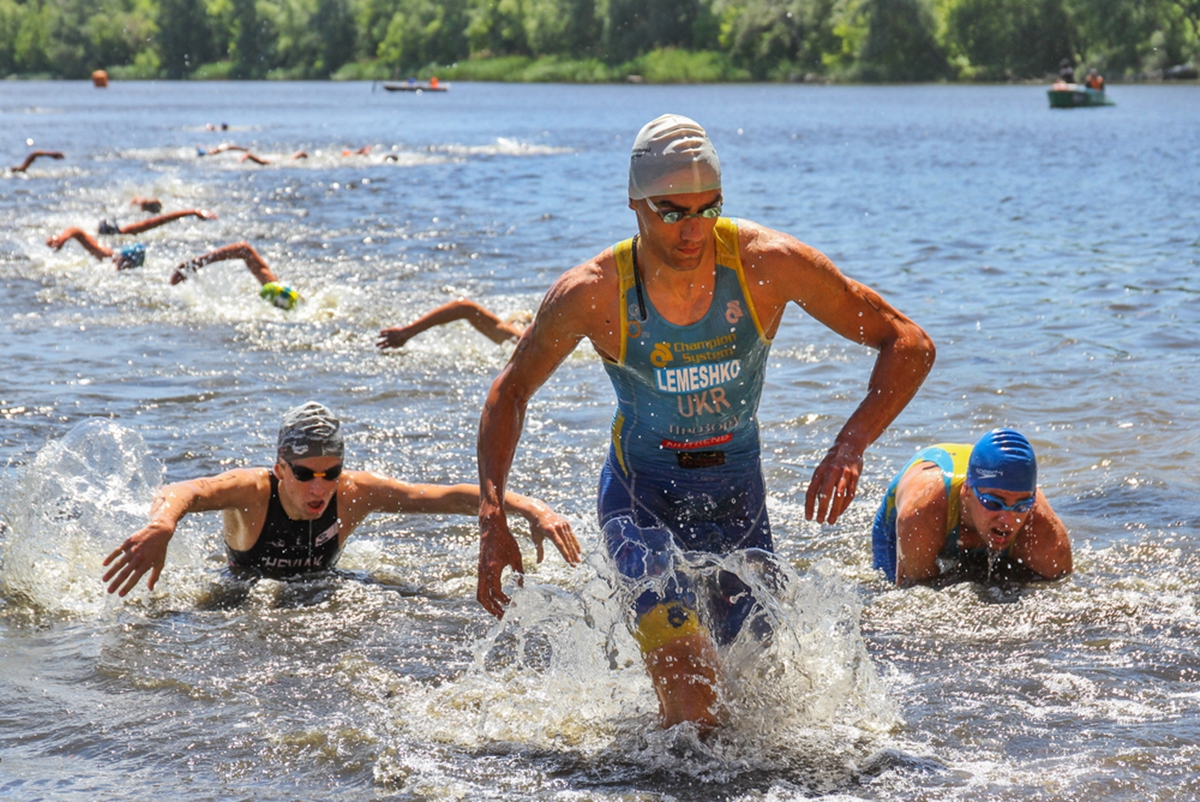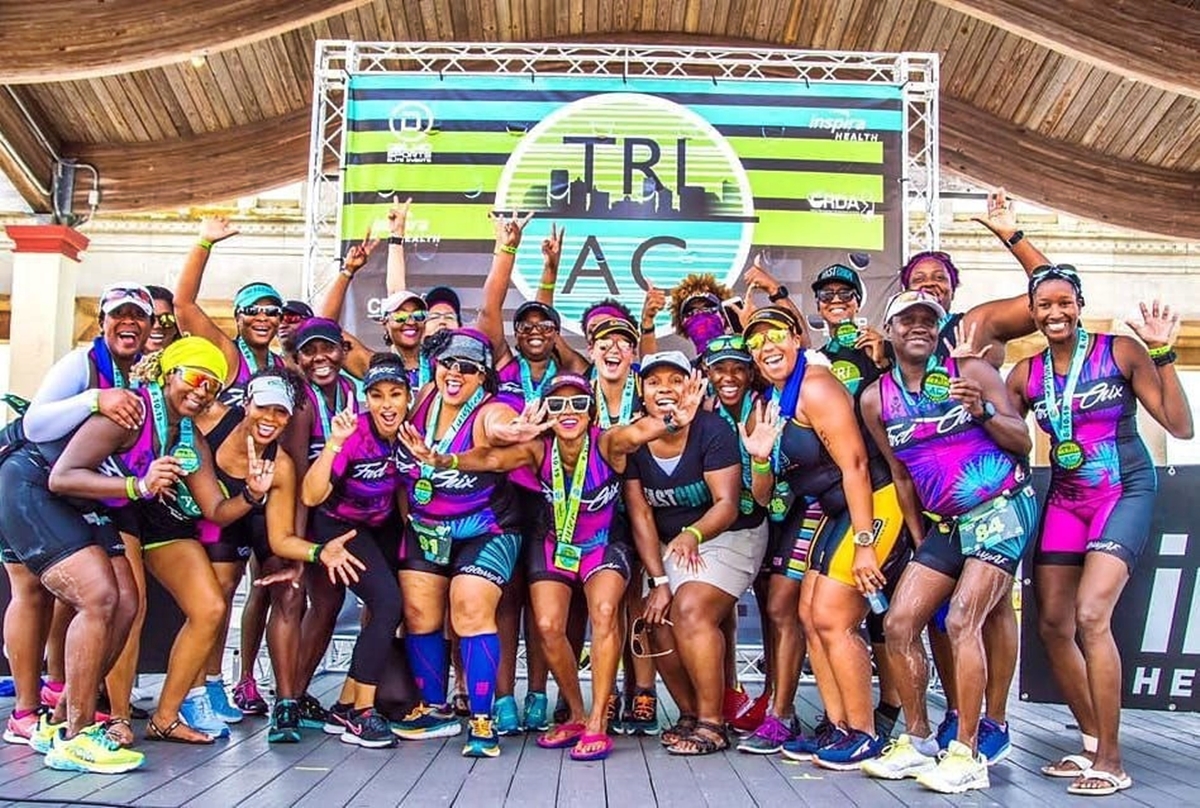

Featured
How To Start A Triathlon Club
Modified: January 22, 2024
Learn how to start a triathlon club and get featured in the triathlon community. Follow our step-by-step guide and become a part of the thriving triathlon world.
Introduction
Welcome to the world of triathlons! If you have a passion for swimming, cycling, and running, starting a triathlon club is an excellent way to bring like-minded individuals together and foster a community built on fitness, camaraderie, and personal achievement. Whether you are a seasoned triathlete or just getting started, establishing a triathlon club can provide a platform for growth, motivation, and support as you pursue your athletic goals.
Triathlon clubs offer a variety of benefits, including access to training partners, coaching expertise, and a network of individuals who share your passion for multi-sport events. Moreover, being part of a club can offer a sense of belonging and the opportunity to form lifelong friendships with fellow athletes.
In this guide, we will walk you through the steps to start your own triathlon club. From defining your mission and goals to promoting and marketing your club, we will provide a comprehensive roadmap to help you get started and ensure the long-term success of your club.
Starting a triathlon club can be a rewarding endeavor, but it requires careful planning, dedication, and organization. By following the steps outlined in this guide, you will be well-equipped to create a thriving triathlon club that supports and inspires athletes of all levels.
So, let’s dive into the details and explore how to embark on this exciting journey of establishing your own triathlon club.
Step 1: Define Your Mission and Goals
Before diving into the logistics of starting a triathlon club, it’s crucial to have a clear understanding of your club’s mission and goals. This foundational step will shape the direction and focus of your club, guiding all future decisions and activities.
First and foremost, define the purpose of your triathlon club. Are you looking to create a competitive club focused on training and racing, or do you want to foster a more recreational environment, emphasizing community and fitness? Understanding your club’s purpose will help attract like-minded individuals who align with your vision.
Next, establish your club’s goals. Are you aiming to build a strong community of triathletes, promote the sport to new participants, or provide support and resources for aspiring athletes? Setting clear and measurable goals will provide a sense of direction and enable you to evaluate your club’s progress over time.
Consider the target demographic you want to reach. Will your club be open to athletes of all ages, or will you focus on a specific age group or skill level? Identifying your target audience will help tailor your club’s activities and programs to meet their specific needs and expectations.
Additionally, think about the values you want your club to embody. Do you prioritize inclusivity, sportsmanship, and personal growth? Clearly communicating your club’s values will attract individuals who share these ideals and help create a supportive and positive club culture.
Lastly, consider the long-term sustainability of your club. Think about how you will measure success and the steps you will take to ensure the club’s continued growth. This may involve establishing partnerships with local businesses, securing funding through sponsorships, or developing a strategic plan for club development.
Remember, the mission and goals of your triathlon club will be the driving force behind all club activities and decisions. By clearly defining and articulating these factors, you will lay a strong foundation for the success and longevity of your club.
Step 2: Find Potential Members
One of the key aspects of starting a successful triathlon club is finding potential members who are enthusiastic about the sport and eager to join your club’s community. Here are some strategies to help you recruit members for your triathlon club:
1. Leverage your network: Start by reaching out to friends, family members, and colleagues who have expressed an interest in triathlons. They may be eager to join your club or know others who would be interested. Personal recommendations can be a powerful tool for attracting members.
2. Utilize social media: Create a presence for your club on popular social media platforms such as Facebook, Instagram, and Twitter. Share engaging content showcasing your club’s activities, training sessions, and success stories. Encourage your existing members to share these posts to expand your reach and attract potential members.
3. Connect with local sports clubs: Reach out to other local sports clubs, such as running clubs or cycling groups, and inquire about potential collaborative opportunities. Cross-promotion can help expose your club to a wider audience and attract individuals who are already interested in endurance sports.
4. Attend events and races: Set up a booth or display at local triathlon events or sports expos to promote your club. This way, you can directly engage with athletes who are passionate about triathlons and may be looking for a supportive community to join.
5. Host informational sessions: Organize information sessions or open house events where potential members can learn more about your club. Offer presentations, Q&A sessions, and opportunities for individuals to connect with current club members. This will allow potential members to get a real sense of what your club has to offer and how they can benefit from joining.
6. Engage with local triathlon coaches and trainers: Reach out to local coaches and trainers who specialize in triathlon training. Connect with them to see if they can refer their clients to your club or promote your club to their network. These professionals often have a wide network of athletes who may be interested in joining a triathlon club.
Remember, finding potential members is an ongoing process. Be proactive and consistently explore new avenues to attract individuals who align with your club’s mission and values. By implementing these strategies, you can build a strong and vibrant membership base for your triathlon club.
Step 3: Establish a Club Structure
Establishing a solid club structure is essential for the smooth operation and organization of your triathlon club. Here are some key considerations to help you establish a strong foundation:
1. Club leadership: Determine the leadership structure of your club, including positions such as president, vice president, treasurer, and secretary. Clearly define the roles and responsibilities of each position to ensure effective management and decision-making.
2. Club committees: Consider forming committees that focus on specific aspects of your club, such as training programs, event planning, and social activities. Committees can help distribute responsibilities and tap into the expertise and skills of different club members.
3. Membership structure: Decide on the membership criteria and fees for your club. Will you have different types of memberships, such as individual, family, or student? Determine the benefits that come with each membership type, such as access to training sessions, coaching, and discounts on club merchandise.
4. Training programs: Develop structured training programs that cater to the needs and skill levels of your club members. Consider offering sessions for beginners, intermediate, and advanced athletes. Collaborate with experienced coaches or certified trainers to design effective and progressive training plans.
5. Club schedule: Create a regular schedule for training sessions, group workouts, and club meetings. Consider factors such as the availability of athletes, local event calendars, and seasonal considerations. Ensure that the schedule is communicated clearly to members and is easily accessible through your club’s communication channels.
6. Facilities and equipment: Identify the facilities and equipment needed for your club activities. This could include access to swimming pools, running tracks, cycling routes, or gym facilities. Explore partnerships with local fitness centers or negotiate group rates for your club members.
7. Safety protocols: Establish safety guidelines and protocols to ensure the well-being of your club members during training sessions and events. This may include guidelines for open water swims, rules for group rides, and recommendations for wearing safety gear.
8. Club branding: Develop a club logo, website, and other branding elements to give your club a professional and cohesive image. A strong brand presence can help attract potential members and sponsors and create a sense of identity and pride among your club members.
Remember, a well-structured club provides a solid framework for the growth and success of your triathlon club. Take the time to establish clear roles, programs, and guidelines to create an inviting and organized environment for your club members.
Step 4: Organize Training Sessions
Organizing regular training sessions is a vital component of any triathlon club, as it provides members with the opportunity to improve their skills, enhance their fitness, and build camaraderie with fellow athletes. Here’s how you can effectively organize training sessions for your club:
1. Identify training needs: Consider the skill levels and goals of your club members when planning training sessions. Some members may be beginners looking to improve their technique, while others may be more experienced athletes aiming to enhance their performance. Cater to a variety of skill levels by offering sessions for different disciplines, such as swimming, cycling, and running.
2. Create a training schedule: Develop a training schedule that includes a mix of group sessions and individual training. Group sessions foster a sense of community and allow members to train together, while individual training ensures flexibility and personalization. Strike a balance between structured sessions led by coaches/trainers and self-directed training.
3. Offer diverse training options: Provide a variety of training options to accommodate the needs and preferences of your club members. This could include interval training, long endurance sessions, brick workouts (combination of two disciplines), or skills clinics. Ensure that sessions are well-rounded and cover all aspects of triathlon training.
4. Collaborate with coaches and trainers: If possible, collaborate with experienced coaches and trainers who can provide expertise and guidance during training sessions. They can help design and lead structured workouts, offer technique analysis and improvement, and provide valuable insights into training methodologies.
5. Location and facilities: Secure appropriate training locations and facilities for each discipline. This may include access to a swimming pool, designated cycling routes, and running tracks. Consider the availability of these facilities, the convenience for your members, and any associated costs or permits required.
6. Communication and coordination: Clearly communicate training schedules, session details, and any changes or updates to your club members. Utilize communication channels such as email, social media groups, or a dedicated club website to ensure that everyone is informed and can plan accordingly. Encourage members to provide feedback and suggestions for future training sessions.
7. Track progress and provide feedback: Implement a system to track and monitor members’ progress. This can include performance metrics, training logs, or even periodic assessments. Provide constructive feedback to members to help them improve their skills and reach their goals.
Remember, training sessions should be engaging, challenging, and enjoyable for your club members. By carefully planning and organizing training sessions, you create an environment that promotes growth, fosters camaraderie, and ultimately helps your members become stronger and more successful triathletes.
Step 5: Plan Social Events and Competitions
Organizing social events and competitions is a vital aspect of any triathlon club as it fosters a sense of community, camaraderie, and healthy competition among the members. Here are some steps to effectively plan social events and competitions for your club:
1. Determine the types of events: Consider what types of social events and competitions will best suit your club’s mission and goals. This can include social gatherings like BBQs, potlucks, or group outings to bring members together outside of training sessions. Additionally, plan and promote club-specific competitions or participate as a group in local races and triathlon events.
2. Set up a social committee: Establish a committee dedicated to planning and organizing social events and competitions. Assign tasks such as venue selection, budgeting, coordinating logistics, and promoting the events. Encourage committee members to gather input and ideas from the club members to ensure that the events align with their interests.
3. Schedule events in advance: Plan a calendar of events for the year to allow members to anticipate and schedule their participation. Offer a mix of smaller, more frequent social events, as well as larger events or competitions that members can work towards as a goal. Consider seasonal factors and the availability of venues when setting dates.
4. Seek sponsorships: Reach out to local businesses or sports-related companies to secure sponsorships for your events or competitions. Sponsorship can help cover costs, provide prizes, or offer discounts on products and services. In return, offer sponsorship recognition and exposure for the sponsoring businesses through event promotion and signage.
5. Promote and market the events: Use various marketing channels to promote your social events and competitions. Leverage your club’s website, social media platforms, email newsletters, and local community channels to spread the word. Create visually appealing graphics or videos to attract attention and generate interest.
6. Offer inclusive events: Organize events that cater to all club members, regardless of their skill level or experience. This can include fun relay races, team-building activities, or friendly challenges that encourage participation from everyone. Fostering inclusivity will strengthen the bond among members and create a supportive and welcoming club environment.
7. Recognize achievements: Acknowledge and celebrate the achievements of club members during social events and competitions. Whether it’s completing a triathlon or reaching a personal milestone, giving members a platform to share their accomplishments fosters a sense of pride and inspires others to push their boundaries.
Remember, planning social events and competitions not only enhances the club experience but also strengthens the bond among club members. By offering a diverse range of events and creating opportunities for members to connect and celebrate, you contribute to the growth and vibrancy of your triathlon club.
Step 6: Secure Funding and Sponsorship
Securing funding and sponsorship is crucial for the financial sustainability and growth of your triathlon club. Having financial support means you can offer more resources, facilities, and opportunities for your members. Here are some steps to help you secure funding and sponsorship:
1. Identify potential sponsors: Research and identify local businesses, sports-related companies, and organizations that align with the values and mission of your triathlon club. Look for sponsors that have an interest in health, fitness, and community involvement. Create a list of potential sponsors to reach out to.
2. Develop a sponsorship proposal: Create a well-crafted sponsorship proposal that highlights the benefits of sponsoring your club. Clearly articulate what your club has to offer in terms of exposure, branding opportunities, and positive community impact. Include details about the target audience, club activities, and any unique selling points that set your club apart.
3. Offer sponsorship packages: Develop sponsorship packages that outline different levels of sponsorship and the benefits associated with each level. Include options for different types of partnerships, such as event sponsorship, equipment or gear sponsorship, or year-round club sponsorship. Customize these packages based on the sponsor’s budget and desired level of involvement.
4. Network and build relationships: Attend local business networking events or industry conferences to connect with potential sponsors. Introduce yourself, explain your club’s mission and goals, and discuss the benefits of sponsorship. Establishing personal connections and building relationships is often key to securing sponsorships.
5. Leverage social media and online presence: Use your club’s website, social media platforms, and email newsletters to showcase your sponsorship opportunities. Highlight the benefits of partnering with your club and the exposure sponsors can expect to receive. Regularly update your online presence with club activities and success stories to demonstrate your club’s value to potential sponsors.
6. Provide sponsor recognition: Show appreciation for your sponsors by recognizing and acknowledging their support. This can include displaying sponsor logos on your website, in club communications, and at events. Give sponsors opportunities to interact with club members and promote their products or services to your audience.
7. Follow up and maintain relationships: After securing a sponsor, maintain regular communication and provide updates on club activities and achievements. Offer opportunities for sponsors to engage with your club and provide feedback on the impact of their sponsorship. Building long-term relationships with sponsors can lead to ongoing support and potential renewed partnerships.
Remember, securing funding and sponsorship requires proactive effort and effective communication. By approaching potential sponsors with a well-crafted proposal, highlighting the benefits of partnering with your club, and maintaining strong relationships, you can successfully secure the funding needed to support your triathlon club’s growth and success.
Step 7: Create a Communication Plan
A well-designed communication plan is essential for keeping your triathlon club members informed, engaged, and connected. Effective communication helps promote club activities, share important updates, and build a strong sense of community. Here’s how to create a communication plan for your club:
1. Establish communication channels: Determine the primary communication channels for your club. This can include email newsletters, a dedicated club website, social media platforms, and messaging apps. Choose channels that are convenient and easily accessible for your members.
2. Develop a content strategy: Plan what type of content you will share and how frequently. This can include training tips, event announcements, success stories, member spotlights, and motivational messages. Vary the content to maintain member interest and offer valuable information.
3. Create a club website: Develop a user-friendly club website that serves as a central hub for information and updates. Include sections such as training schedules, event calendars, news updates, and resources for club members. Make it easy for members to navigate and find the information they need.
4. Utilize social media platforms: Leverage popular social media platforms like Facebook, Instagram, and Twitter to engage with your members and attract new ones. Share updates, photos, and videos highlighting club activities, achievements, and upcoming events. Encourage members to follow and engage with your club’s social media accounts.
5. Implement an email newsletter: Send regular newsletters to your club members with relevant information and updates. Include training plans, event reminders, race recaps, and any other club-related news. Personalize the newsletters when possible and encourage member submissions for content.
6. Communicate important updates promptly: Ensure that important updates, such as changes to training schedules, venue locations, or event cancellations, are communicated promptly to all members. Utilize all communication channels to reach as many members as possible and avoid confusion or frustration.
7. Encourage two-way communication: Create opportunities for members to provide feedback, ask questions, and share their experiences. This can be done through surveys, Q&A sessions, and discussion forums on your club website or social media platforms. Actively listen to member feedback and address any concerns or suggestions.
8. Celebrate member achievements: Recognize and celebrate the accomplishments of your members. Share race results, personal milestones, and stories of perseverance. Feature members on your website or social media platforms to inspire others and create a supportive club atmosphere.
9. Regularly evaluate and improve: Continually assess the effectiveness of your communication efforts. Analyze engagement metrics, seek member feedback, and make adjustments as needed. Stay up to date with new communication tools and trends to enhance your club’s communication strategies.
Remember, effective communication is the backbone of a thriving triathlon club. By developing a comprehensive communication plan and utilizing various channels, you can keep your members informed, engaged, and excited about being part of your club’s community.
Step 8: Establish Club Policies and Guidelines
To ensure the smooth operation and safety of your triathlon club, it is crucial to establish clear and comprehensive policies and guidelines. These guidelines will help create a positive and inclusive club culture while ensuring the well-being of all members. Here’s how to establish club policies and guidelines:
1. Code of Conduct: Develop a code of conduct that outlines the expected behavior and standards for all club members. This code should emphasize respect, sportsmanship, and inclusivity. Include guidelines for appropriate communication, fair competition, and participation in club activities.
2. Safety Guidelines: Establish safety guidelines to ensure the well-being of club members during training sessions and events. This can include rules and recommendations for open water swims, cycling in groups, and running on roads. Emphasize the importance of wearing appropriate safety gear and practicing good sportsmanship.
3. Membership Requirements: Clearly define the requirements and expectations for club membership. This can include age restrictions (if applicable), skill levels, and any prerequisites for joining. Outline the membership benefits, responsibilities, and fees to ensure transparency and clarify what members can expect from the club.
4. Training Session Protocols: Provide guidelines for training sessions to ensure a safe and effective training environment. This can include rules for warm-ups and cool-downs, expectations for punctuality and attendance, and guidelines for taking turns and sharing equipment. Encourage members to respect the training session structure and the coaching/trainer authority.
5. Financial Policies: Establish financial policies to guide the collection and management of club fees, fundraising initiatives, and sponsorship funds. Define how the funds will be allocated and the accountability measures in place. Ensure transparency and provide regular financial updates to club members.
6. Communication Policies: Set guidelines for club communication, including the use of social media platforms, email distribution lists, and other communication channels. Clearly define what is acceptable communication within the club and provide guidelines on respectful and constructive engagement among members.
7. Event Participation Guidelines: Develop guidelines for participating in club events and competitions. This can include requirements for race registration, expectations for representing the club, and guidelines for club attire. Encourage members to demonstrate good sportsmanship, promote a positive club image, and support fellow club members.
8. Grievance and Conflict Resolution: Establish a process for addressing grievances or conflicts within the club. Provide a clear pathway for members to report issues, and outline the steps for addressing and resolving concerns. Ensure confidentiality and impartiality throughout the process.
9. Review and Update Policies: Regularly review and update club policies to reflect any changes in membership, regulations, or best practices. Seek input from club members and consider their feedback when making policy improvements.
By establishing clear club policies and guidelines, you promote a safe and inclusive environment for all members. These policies serve as a roadmap for behavior and ensure that everyone understands their roles, responsibilities, and expectations. Regularly communicate and educate club members about the policies to foster a harmonious and well-structured triathlon club.
Step 9: Promote and Market Your Club
Promoting and marketing your triathlon club is crucial for attracting new members, building community awareness, and attracting potential sponsors. A well-executed marketing strategy can help establish your club as a reputable and desirable destination for triathletes. Here’s how you can effectively promote and market your club:
1. Develop a club brand: Create a distinctive club logo, color scheme, and visual identity that aligns with your club’s mission and values. Consistently incorporate this branding into all marketing materials, including your website, social media profiles, and printed materials.
2. Showcase your club’s unique selling points: Identify and highlight the unique aspects of your club that set it apart from others. This can include personalized coaching, access to specialized training facilities, community involvement, or exceptional camaraderie among members. Promote these selling points in your marketing materials to attract the attention of potential members.
3. Professional website: Build a professional and user-friendly website that showcases your club’s offerings, training programs, upcoming events, and member testimonials. Ensure that the website is mobile-responsive and optimized for search engines to enhance its visibility.
4. Leverage social media: Establish a strong presence on social media platforms such as Facebook, Instagram, Twitter, and YouTube. Share engaging content, including training tips, member achievements, event highlights, and behind-the-scenes glimpses of club activities. Encourage members to share their experiences and use club-specific hashtags to increase visibility.
5. Create engaging content: Develop high-quality and relevant content that appeals to your target audience. This can include blog posts, videos, podcasts, or infographics. Cover topics such as race strategies, injury prevention, nutrition tips, and athlete profiles. Regularly share this content across your website and social media platforms to position your club as a trusted source of knowledge and expertise.
6. Collaborate with local businesses and organizations: Partner with local businesses, fitness centers, community centers, or sports clinics to cross-promote your club. Display posters or flyers in their establishments, host joint events or workshops, or offer exclusive deals to their members. Such collaborations can expand your reach and attract potential members who are already interested in fitness and endurance sports.
7. Attend expos and events: Participate in local sports expos, endurance events, and health fairs to promote your club. Set up a booth or display and engage with attendees, distributing flyers and club information. Create an interactive experience, such as a bike fit demonstration or mini-training session, to attract attention and leave a lasting impression.
8. Encourage word-of-mouth marketing: Tap into the power of word-of-mouth marketing by encouraging your existing members to share their positive experiences with others. Offer incentives for referrals or create a member ambassador program where enthusiastic members can actively promote the club in their networks.
9. Offer trial sessions or open house events: Organize trial sessions or open house events where potential members can experience what your club has to offer firsthand. Allow them to participate in a training session, meet current members, ask questions, and learn about the benefits of joining the club.
10. Measure and analyze your marketing efforts: Regularly review your marketing strategies and assess their effectiveness. Utilize analytics tools to track website traffic, social media engagement, and membership inquiries. Use this data to make informed decisions and refine your marketing efforts for better results.
By implementing a well-rounded marketing strategy, you can raise awareness of your triathlon club, attract new members, and cultivate a positive brand image. Continually evaluate and adjust your marketing tactics to ensure that your message reaches and resonates with your target audience.
Step 10: Maintain Club Growth and Sustainability
Maintaining club growth and sustainability is vital to ensure the long-term success and viability of your triathlon club. It requires ongoing effort, adaptability, and a focus on member retention. Here are some strategies to help you maintain club growth and sustainability:
1. Continuously assess member needs: Regularly survey your club members to gather feedback and assess their needs and expectations. Understand their goals, training preferences, and interests to tailor club activities and programs accordingly. This will help keep members engaged and motivated.
2. Offer varied and progressive training programs: Continually innovate and diversify your training programs to suit the evolving needs of your members. Consider introducing new training methodologies, incorporating cross-training activities, or hosting specialty workshops to keep members excited and engaged.
3. Foster a sense of community: Nurture a strong sense of community within your club by organizing social events, team-building activities, and member get-togethers. Encourage members to connect and support each other beyond training sessions. A strong community fosters member loyalty and creates a positive club environment.
4. Provide ongoing coaching and support: Maintain a network of qualified coaches or trainers who can provide ongoing guidance and support to club members. Offer regular access to coaching clinics, technique workshops, and personalized training advice. This will help members progress and achieve their goals.
5. Regularly evaluate and update club policies: Continually review and update club policies and guidelines to reflect any changes in regulations or membership needs. Seek feedback from members and ensure that the policies are transparent, fair, and effectively enforced.
6. Embrace technology and innovation: Stay up to date with new technologies and innovations that can enhance club operations and member experience. Consider using training software, mobile apps, or wearable devices to track progress, facilitate communication, and provide personalized training recommendations.
7. Seek partnerships and sponsorship opportunities: Explore partnerships with local businesses, sports brands, or health professionals to secure ongoing sponsorships or benefits for your members. Collaborate with these partners to offer exclusive discounts, access to specialized services, or sponsorship support for club events and activities.
8. Encourage member involvement and leadership: Foster a culture of member involvement by providing opportunities for members to take on leadership roles or contribute their skills and expertise to the club. This can include organizing events, leading training sessions, or mentoring new members. Empowering members strengthens their connection to the club and enhances their sense of ownership.
9. Communicate regularly and transparently: Maintain regular communication with your club members through newsletters, club updates, and social media platforms. Share relevant information about upcoming events, training programs, and club initiatives. Transparency and effective communication help reinforce member engagement and trust.
10. Celebrate achievements and milestones: Continually recognize and celebrate the achievements and milestones of your club members. Highlight their successes through social media shoutouts, newsletters, or awards ceremonies. Celebrating members’ accomplishments reinforces their dedication and inspires others.
Remember, maintaining club growth and sustainability requires a commitment to continuous improvement and adaptation. By focusing on member needs, fostering a strong sense of community, and embracing innovation, you can ensure the long-term success and thriving future of your triathlon club.
Conclusion
Congratulations on reaching the end of this comprehensive guide on how to start and maintain a successful triathlon club. Establishing a triathlon club is a rewarding endeavor that can bring together athletes of all skill levels, fostering a sense of community and support as members pursue their athletic goals.
Throughout this guide, we’ve explored ten essential steps to help you kickstart your triathlon club journey. From defining your mission and goals to maintaining club growth and sustainability, each step plays a crucial role in creating a thriving and inclusive club environment. By following these steps, you’ll be equipped with the knowledge and strategies to establish a strong foundation for your club’s success.
Remember to clearly define your club’s mission and goals, actively seek out potential members, establish a club structure, organize effective training sessions, and plan social events and competitions that engage and inspire. By securing funding and sponsorship, creating a comprehensive communication plan, and setting club policies and guidelines, you’ll create a supportive and thriving club community.
Maintaining club growth and sustainability is an ongoing process. Regularly assess member needs, offer varied training programs, foster a sense of community, and provide ongoing support and coaching. Embrace technology, seek partnerships, and communicate transparently to keep your club vibrant and connected.
Starting a triathlon club is not without challenges, but with passion, dedication, and a strategic approach, you can build a thriving community of triathletes who support and inspire each other. So, go ahead and take that leap of faith, and watch your triathlon club grow and flourish. Good luck on your journey!


